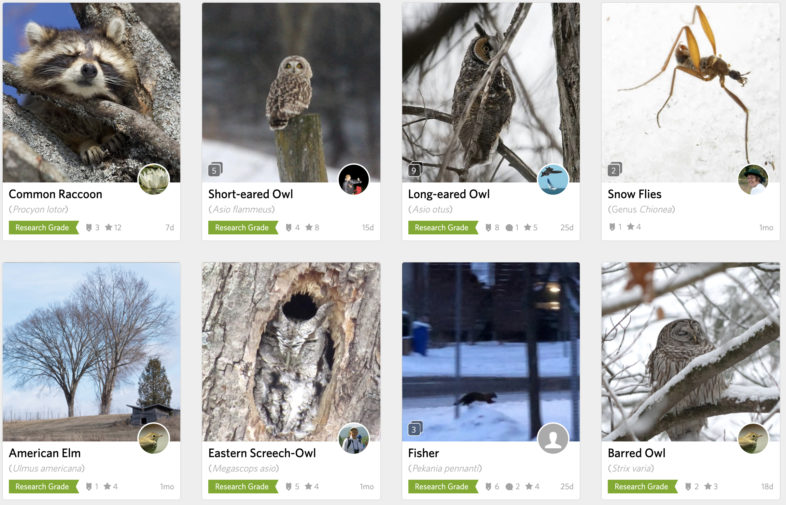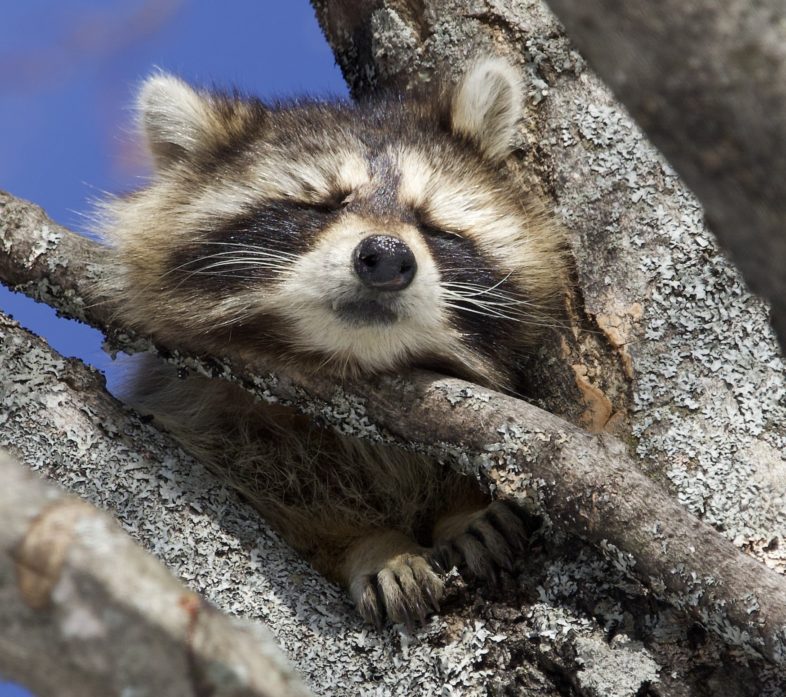Congratulations to killamfarm for winning the February 2020 Vermont Atlas of Life iNaturalist photo-observation of the month. The image of a Common Raccoon (Procyon lotor) sleeping soundly under a blue sky captured the most attention by voters. They added that it “must have been chased up the tree the night before and spent the day resting before disappearing into the night.”

Withover 1,500 photo-observations submitted by 214 observers this month, it was very competitive. Click on the image to see and explore all of the amazing photo-observations.
Raccoons were originally animals of the forest. Today, they are most often be seen along streams, in open forests, or wetlands but inhabit urban, suburban and farming areas as well. They breed from January to mid-March and the litter is born in late April or May. The young, typically numbering four to five but sometimes as many as eight, are helpless and completely dependent on their mother for survival. The male raccoon plays no role in raising the young. The female is very protective of her young and will carry them around by the nape of the neck. They are able to open their eyes after 18 days and soon after gain the ability to hear. By the time they are four to six weeks old, they are strong enough to stand on their own. They are weaned from their mother’s milk and begin to hunt independently by the time they are about three months old. The young will remain with their mother for one year.
Raccoons are nocturnal. Like the rest of their habits, they often modify their behavior when searching for food or water. Raccoons are curious animals, which, at times, can cause problems with humans. This has led to some people labeling them as mischievous and as bandits or robbers.
Visit the Vermont Atlas of Life on iNaturalist where you can vote for the winner this month by clicking the ‘fav’ star on your favorite photo-observation. Make sure you get outdoors and record the biodiversity around you, then submit your discoveries and you could be a winner!

